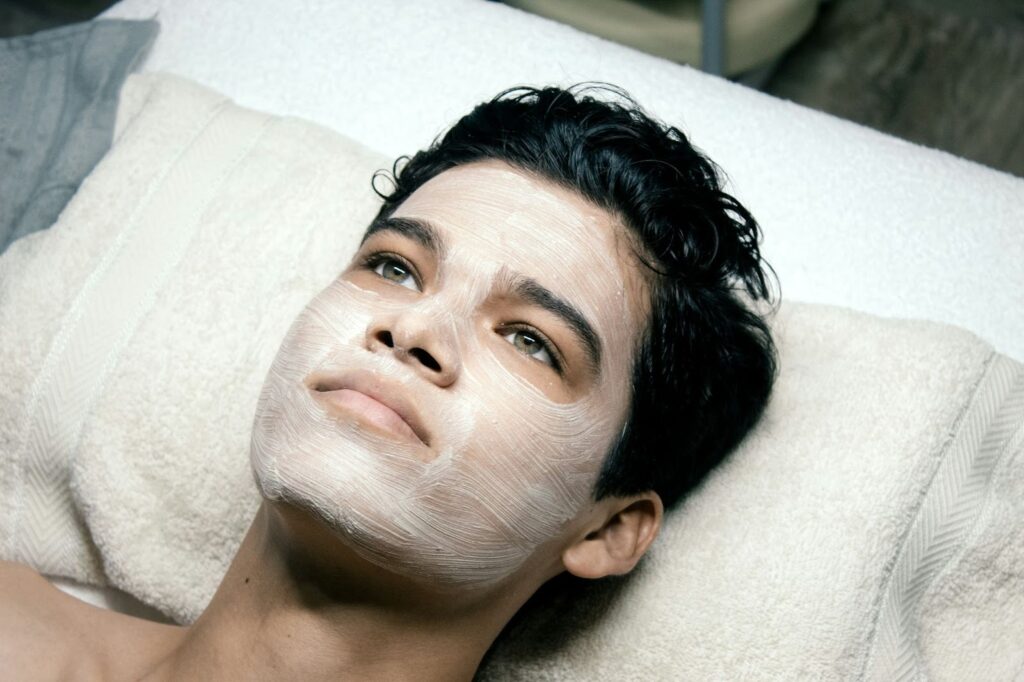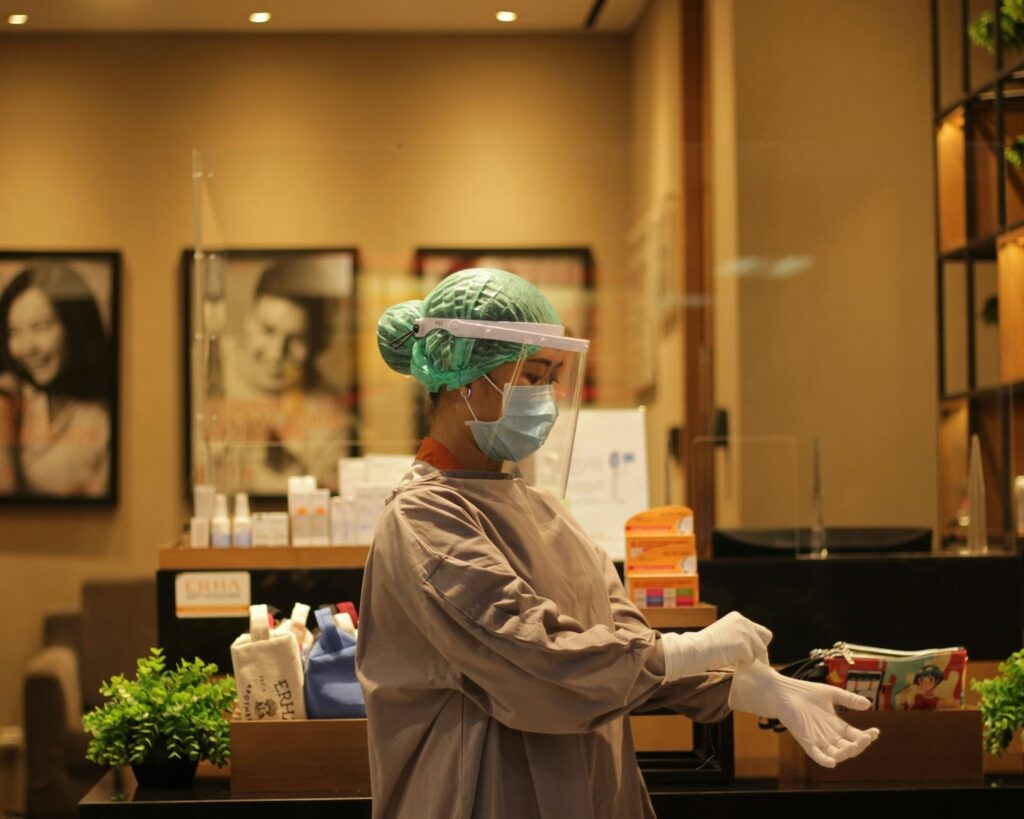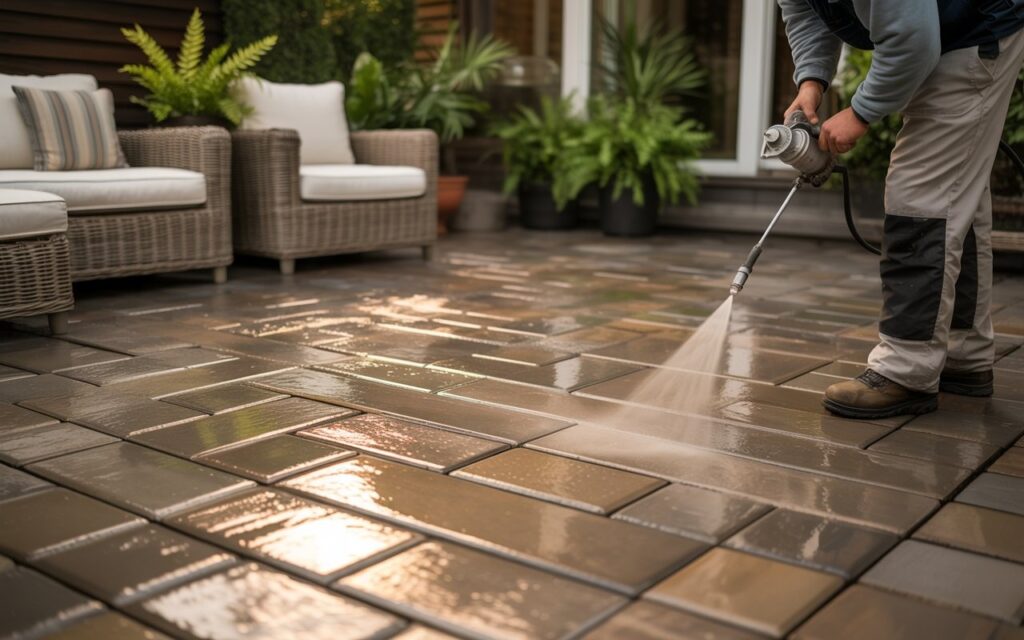Your skin tells a story that begins far beneath its surface. Like an alien landscape under microscopic examination, it reveals intricate ecosystems, complex chemical processes, and surprising intelligence in how it responds to both internal and external environments. Yet despite its seemingly otherworldly complexity, skin possesses remarkable adaptability and resilience when properly supported. This fascinating organ, our body’s largest, has become the focal point where modern healthcare and beauty converge in ways that would have seemed impossible just decades ago.
Clinical procedures address aesthetic concerns while simultaneously promoting genuine health benefits. The relationship between internal wellness and external appearance has never been clearer, with emerging research confirming what holistic practitioners have long suspected: true radiance originates from within. As we explore this fascinating convergence, we’ll examine the science driving preventive beauty, the surprising connections between gut health and skin quality, and the technological innovations reshaping how we approach personal care as an integral component of healthcare.
The Rise of Preventive Beauty: A Healthcare Approach to Skincare
Traditional skincare operated on a reactive model. You waited for problems to appear, then sought solutions to correct them. Acne emerged, and you treated breakouts. Wrinkles developed, and you pursued anti-aging remedies. This approach, while still common, represents an outdated paradigm that modern dermatology and aesthetic medicine are rapidly replacing.
The preventive model flips this script entirely. Rather than waiting for visible concerns to manifest, contemporary skincare focuses on maintaining optimal skin health continuously. This shift mirrors broader healthcare trends emphasizing prevention over intervention. Just as regular exercise and balanced nutrition prevent chronic disease, consistent skin maintenance using evidence-based treatments prevents premature aging, inflammatory conditions, and cellular damage before they become visible problems.
Clinical-grade skincare has moved from dermatologist offices into mainstream consciousness. Medical professionals now collaborate with aesthetic specialists to develop treatment protocols that meet rigorous scientific standards while addressing cosmetic goals. These aren’t superficial beautifying procedures but legitimate medical interventions that strengthen skin barrier function, regulate cellular turnover, and protect against environmental damage.
Data-driven beauty represents another revolutionary development. Smart devices can now analyze multiple skin parameters in real time, measuring hydration levels, detecting early sun damage, monitoring pore congestion, and tracking how skin responds to different products or environmental conditions. This quantified approach transforms skincare from guesswork into precision medicine, enabling truly personalized prevention strategies.
The collaboration between healthcare professionals and aestheticians has created hybrid wellness programs that address appearance and health simultaneously. Dermatologists consult on skincare routines. Nutritionists advise on dietary factors affecting skin quality. Mental health professionals address stress-related skin conditions. This integrated approach recognizes that beautiful skin emerges from comprehensive wellness rather than isolated treatments.
Understanding Preventive Skin Treatments: Beyond Aesthetics

Preventive skin treatments encompass procedures and regimens specifically designed to maintain optimal skin health before problems develop. Unlike reactive treatments targeting existing issues, these interventions work at the cellular level to support natural protective mechanisms and repair processes.
The scope of preventive treatments has expanded dramatically. Pore Minimising Treatments at V Medical Aesthetics Clinic exemplify this approach by addressing sebum regulation and pore refinement before congestion leads to acne or textural irregularities. These medical-grade interventions use advanced technologies to regulate oil production, strengthen pore walls, and prevent the inflammatory cascade that causes breakouts.
Light therapy harnesses specific wavelengths to stimulate cellular repair and collagen production. Red light accelerates healing and reduces inflammation. Blue light targets acne-causing bacteria. Near-infrared wavelengths penetrate deeper to promote structural protein synthesis. These non-invasive treatments work preventively by maintaining cellular health rather than waiting for damage to accumulate.
Chemical exfoliation, when properly calibrated, removes dead cell buildup that would otherwise trigger congestion, dullness, and accelerated aging. Regular gentle exfoliation maintains optimal cell turnover rates, preventing the sluggish renewal that characterizes aging skin. Collagen stimulation treatments using microneedling, radiofrequency, or ultrasound technology strengthen dermal architecture before structural weakening becomes visible as sagging or wrinkling.
Preventive outcomes extend far beyond appearance. Delayed aging signs mean skin maintains its protective and regulatory functions longer. Reduced inflammation decreases the risk of conditions like rosacea and eczema. Protection against environmental stressors prevents DNA damage that could lead to more serious concerns. When skin health is maintained proactively, the aesthetic benefits emerge naturally as expressions of underlying vitality.
Technology in Preventive Beauty: Smart Tools and Advanced Devices
Technological innovation has revolutionized preventive beauty, introducing capabilities that seemed like science fiction just years ago. These advances enable unprecedented precision in skin analysis, treatment customization, and outcome tracking.
AI-driven skin analysis systems use sophisticated imaging and machine learning algorithms to detect early signs of damage invisible to the naked eye. These devices can identify precancerous changes, predict aging patterns based on current cellular health, and recommend preventive interventions before problems become visible. Some systems analyze thousands of facial data points to create comprehensive skin health profiles that guide personalized treatment plans.
Wearable skincare technology takes customization further. Smart patches analyze skin chemistry continuously, detecting hydration levels, pH changes, and inflammatory markers. Smart masks deliver precisely calibrated ingredients based on real-time skin needs, adjusting formulations dynamically. These connected devices create feedback loops where treatments adapt to skin’s changing conditions rather than following static protocols.
Laser and LED therapy devices have become increasingly sophisticated and accessible. Professional-grade treatments in clinical settings use multiple wavelengths simultaneously to address different skin layers and concerns. Home-use devices, while less powerful, enable consistent preventive care between professional treatments. These technologies promote collagen synthesis, manage enlarged pores, reduce bacteria, and accelerate cellular repair through targeted light exposure.
Connected care platforms integrate multiple data streams including skin metrics, dietary intake, hydration levels, sleep quality, and stress indicators to create comprehensive wellness profiles. This holistic data collection reveals patterns and correlations that inform personalized preventive strategies. You might discover that your skin dehydration correlates with specific dietary choices or that breakouts predictably follow poor sleep periods, enabling proactive interventions.
The integration of these technologies transforms skincare from an intuitive art into a data-informed science. Rather than trying products randomly and hoping for results, you can now use objective measurements to track what actually works for your unique skin biology.
The Medicalization of Beauty: Dermatologists, Aestheticians, and Wellness Experts Unite

Beauty treatments increasingly adopt clinical rigor, with medical professionals playing central roles in aesthetic care. This medicalization brings scientific methodology, safety standards, and evidence-based practices to what was once a largely unregulated industry.
Collaborative care models bring together diverse expertise. Dermatologists provide medical diagnosis and prescription treatments. Aestheticians offer specialized skincare techniques and product knowledge. Nutritionists address dietary factors affecting skin health. Wellness coaches help clients manage stress and lifestyle factors. This multidisciplinary approach recognizes that optimal skin health requires addressing multiple contributing factors simultaneously.
Medical-grade products blur the line between prescription medicine and over-the-counter beauty. These formulations use pharmaceutical-grade active ingredients at concentrations proven effective through clinical research. Many require professional guidance for proper use, similar to prescription medications. The result is skincare that produces measurable physiological changes rather than merely cosmetic effects.
Preventive consultations at advanced clinics resemble comprehensive health check-ups more than traditional beauty appointments. Clients undergo thorough skin analysis, discuss lifestyle factors, review health history, and receive personalized prevention plans. Progress is tracked through objective measurements using imaging technology, with treatments adjusted based on results rather than subjective impressions.
Digital health records for skincare enable longitudinal tracking similar to medical charts. Treatment history, product reactions, seasonal variations, and outcome measurements are documented systematically. This data accumulation over time reveals patterns that inform increasingly refined prevention strategies, making care more effective with each visit.
The Gut-Skin Connection: Internal Health Reflected Externally

The relationship between digestive health and skin quality represents one of modern medicine’s most fascinating discoveries. Your gut microbiome, the trillions of bacteria inhabiting your digestive tract, exerts profound influence over skin appearance and health through multiple interconnected pathways.
Microbiome balance affects inflammation throughout the body, including skin. Beneficial gut bacteria produce anti-inflammatory compounds and regulate immune responses. When gut flora becomes imbalanced, inflammatory signals increase, manifesting as acne, eczema, rosacea, and other skin conditions. Research consistently demonstrates that people with inflammatory skin conditions often have distinct gut microbiome profiles compared to those with clear skin.
This understanding has sparked a holistic wellness trend integrating internal cleansing with skincare routines. Approaches incorporating magnesium colon cleanse aim to optimize digestive function, improve nutrient absorption, and support the body’s natural detoxification processes. By addressing gut health, these protocols work from within to create conditions for radiant skin.
Scientific research increasingly supports this integrated approach. Studies show improved gut health correlates with clearer, smoother skin and reduced oxidative stress markers. The gut-brain-skin axis reveals how digestive health influences stress hormones, which in turn affect sebum production, inflammation, and healing capacity. When gut health improves, many people experience significant skin improvements without changing their topical skincare routines.
Nutrient absorption plays a crucial role in this connection. Even with excellent diet, poor gut health can prevent optimal absorption of skin-supporting nutrients like vitamins A, C, E, zinc, and omega-3 fatty acids. By optimizing digestive function, the body can better utilize the nutritional building blocks essential for healthy skin cell production and repair.
Lifestyle Integration: Everyday Preventive Habits for Skin Health
Preventive skin health extends far beyond clinical treatments to encompass daily habits that either support or undermine your skin’s natural resilience. These foundational practices create the conditions for treatments to be maximally effective.
Hydration and nutrition form the basis of skin health. Antioxidant-rich diets provide the raw materials for cellular repair and protection against free radical damage. Probiotics support gut health, which as we’ve discussed, directly influences skin quality. Clean water intake maintains cellular function and helps eliminate metabolic waste products. Omega-3 fatty acids support skin barrier integrity and reduce inflammation.
Consistent skincare routines that respect skin biology make tremendous difference over time. Gentle cleansing removes impurities without stripping protective oils. Daily SPF application prevents the majority of premature aging by blocking UV damage. Barrier-supportive serums with ceramides, niacinamide, and hyaluronic acid strengthen skin’s protective function. The key is consistency rather than complexity.
Mind-body practices influence skin health through hormonal and inflammatory pathways. Meditation reduces cortisol levels that otherwise increase sebum production and inflammation. Quality sleep provides the essential recovery period when growth hormone peaks and cellular repair processes accelerate. Stress management prevents the cascade of hormonal changes that trigger breakouts, rosacea flares, and accelerated aging.
At-home tools enable professional-level care between clinic visits when used properly. Microcurrent devices stimulate facial muscles and promote lymphatic drainage. LED masks provide consistent light therapy. Gentle exfoliation gadgets maintain cell turnover. The caveat is education: these tools require understanding proper technique and frequency to be beneficial rather than harmful.
Preventive Treatments for All Ages and Skin Types
Effective preventive care adapts to changing needs across the lifespan. What works for skin at twenty differs dramatically from what skin needs at fifty, yet prevention remains beneficial at every stage.
Early adulthood focuses on establishing healthy habits and preventing damage accumulation. Managing oil balance prevents acne scarring that becomes difficult to address later. Reducing pore visibility through appropriate treatments prevents the stretching and congestion that makes pores more prominent over time. Most importantly, sun protection during these years prevents the DNA damage that manifests as premature aging decades later.
Midlife shifts emphasis toward rejuvenation while maintaining prevention. Collagen production naturally declines, making treatments that stimulate synthesis increasingly important. Pigmentation irregularities from cumulative sun exposure require targeted interventions. Hormonal changes during perimenopause and menopause affect skin dramatically, often requiring adjusted prevention strategies and treatments.
Later life stages focus on maintenance and comfort. Keeping skin elastic and well-hydrated becomes paramount as natural moisture retention decreases. Barrier function support prevents the chronic dryness and sensitivity common in mature skin. Continued prevention remains valuable, as healthy skin at any age functions better and remains more comfortable than neglected skin.
Customization based on individual factors ensures relevance across all demographics. Treatments like pore minimization adapt to different skin types, genetic predispositions, climate conditions, and lifestyle factors. Someone in humid tropical climates requires different pore management than someone in dry, cold environments. Genetic factors influencing oil production, collagen density, and pigmentation guide treatment selection.
The Future of Beauty-Healthcare Integration
The convergence of beauty and healthcare continues accelerating, with emerging innovations promising even more sophisticated preventive care. These trends suggest a future where maintaining skin health integrates seamlessly with overall wellness management.
Personalized wellness ecosystems are emerging where aesthetic clinics expand into comprehensive health centers. Blood work revealing nutritional deficiencies, hormone panels explaining skin changes, and inflammation markers guiding treatment protocols create truly integrated care. Beauty becomes one aspect of total health optimization rather than a separate concern.
Tech-enabled prevention will become increasingly sophisticated. Skin mapping using advanced imaging creates detailed topographical and compositional analysis. DNA-based skincare uses genetic testing to predict how skin will age and which ingredients will be most effective. Beyond aesthetics, genetic testing is revolutionizing preventive healthcare in other critical areas as well. For instance, genetic testing for heart disease enables individuals to understand their cardiovascular risks and take proactive measures before symptoms develop—illustrating how predictive medicine is transforming both beauty and broader health management. Predictive algorithms analyze lifestyle data to forecast skin issues before they appear, enabling proactive intervention.
Sustainability and transparency are reshaping industry standards. Consumers increasingly demand eco-conscious products and ethical clinical practices. This pressure drives innovation in sustainable formulations, reduced packaging waste, and transparent ingredient sourcing. The integration of environmental health with personal health acknowledges that toxins affecting the planet also affect our bodies.
The global wellness market expands as beauty-healthcare fusion reaches new demographics and geographies. Cross-disciplinary research brings together dermatologists, nutritionists, microbiologists, and technologists to develop increasingly effective interventions. What emerges is a new healthcare specialty focused on optimizing the body’s largest organ through integrated medical, nutritional, and lifestyle approaches.
Conclusion
The intersection of healthcare and beauty represents far more than aesthetic medicine becoming more scientific. It reflects a fundamental shift in how we understand wellness itself: beauty and health are not separate pursuits but deeply intertwined expressions of the same underlying vitality. When skin glows with health, it reflects optimal functioning of multiple body systems working in harmony.
Preventive skin treatments embody this integrated philosophy. They maintain health proactively rather than reacting to problems after they appear. They recognize that what shows on skin’s surface emerges from complex interactions between genetics, environment, nutrition, stress, gut health, and countless other factors. By addressing these foundations while using targeted treatments, we can maintain skin health across the lifespan in ways previous generations could never achieve.
The future promises even deeper integration as technology enables increasingly personalized care and research reveals more about the intricate systems governing skin health. Yet the core insight remains elegantly simple: when we treat skin as part of the body’s intelligent ecosystem rather than as a cosmetic surface, beauty naturally emerges as the visible expression of comprehensive wellness. In this light, preventive skin care becomes not vanity but wisdom, recognizing that maintaining our body’s protective barrier contributes to health, comfort, and quality of life at every age.
Read More Gorod








